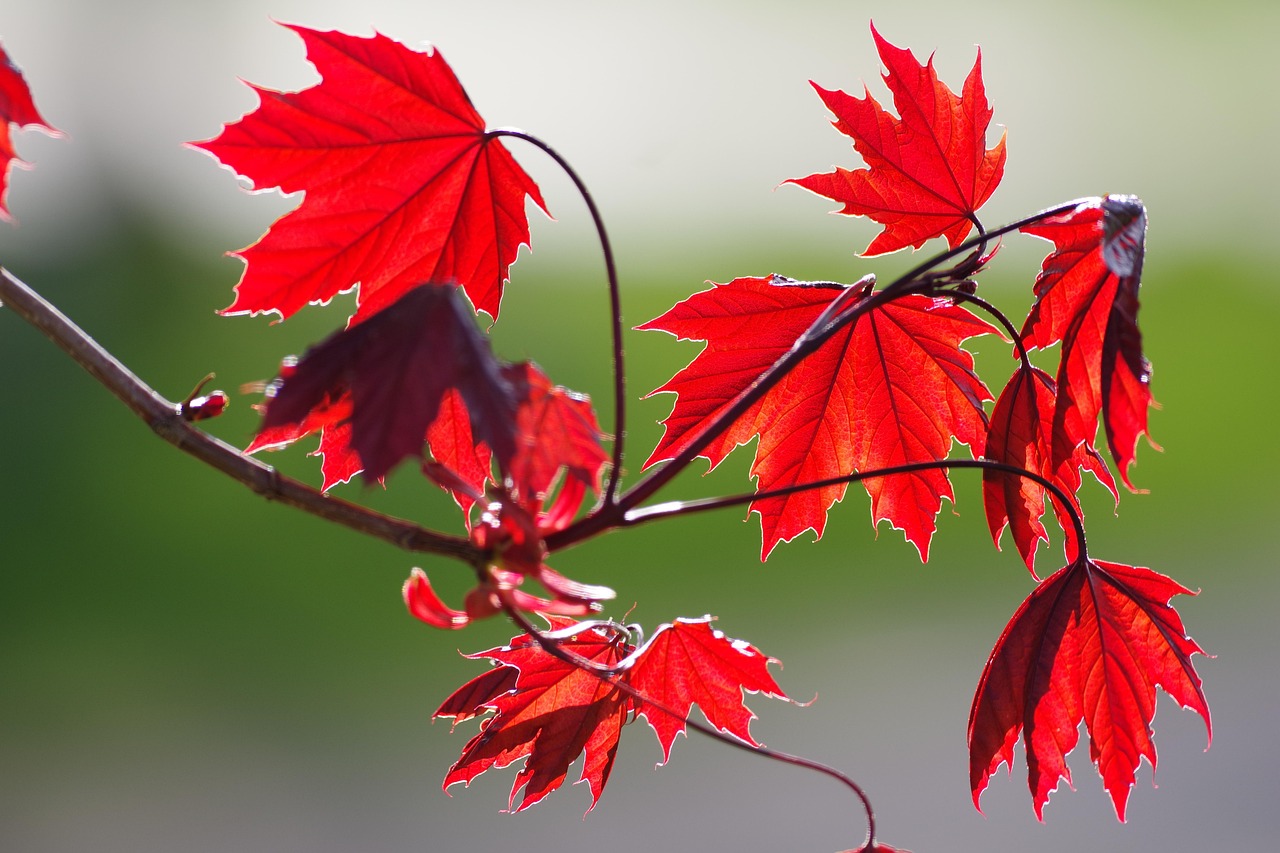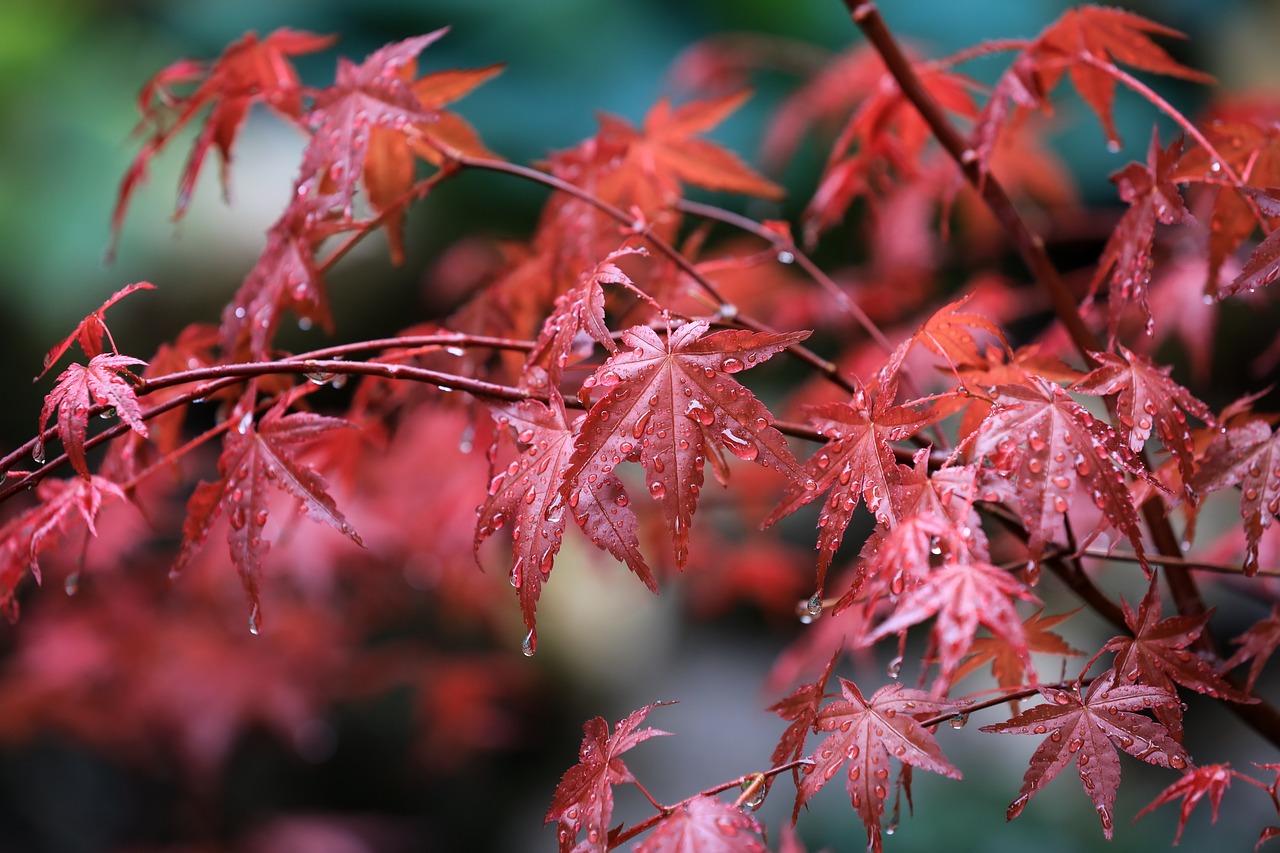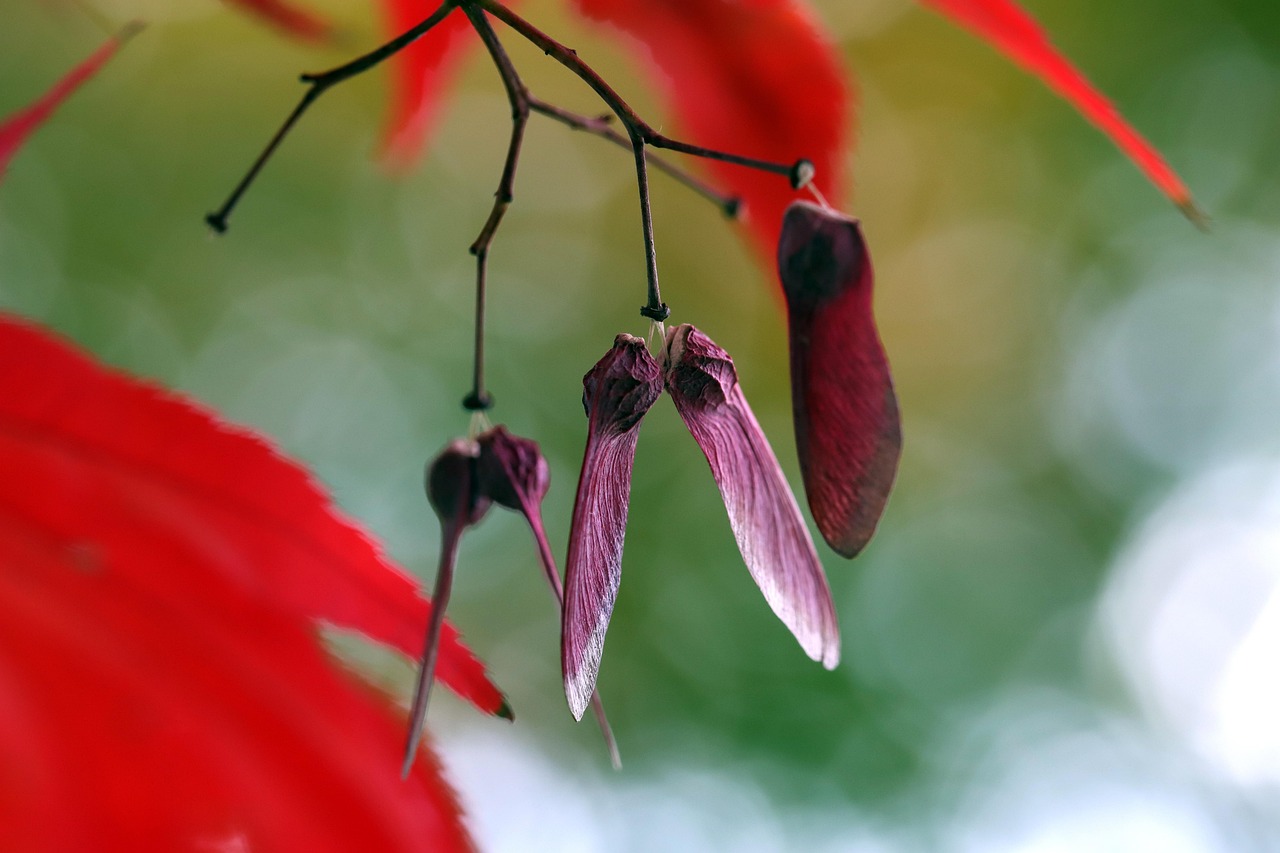Red maples (Acer rubrum) do not have invasive roots, but their root systems can spread out widely and may cause problems in certain situations. They are known for their adaptability, which can lead to issues in urban landscapes.
Understanding Red Maple Trees

Red maples are one of the most common trees in North America. They thrive in a variety of soil types and climates. This adaptability makes them popular for landscaping and reforestation. Their vibrant red foliage in the fall adds beauty to any environment. However, understanding their root behavior is essential for anyone considering planting them.
The root system of a red maple is typically shallow and wide-spreading. This characteristic allows the tree to access moisture and nutrients efficiently. However, it can also lead to complications, especially when planted near structures or landscapes with limited space.
Root Behavior and Growth Patterns
The roots of red maples can grow aggressively, reaching out several feet from the base of the tree. This behavior is driven by their need for water and nutrients. As they grow, the roots may compete with other plants for resources. This competition can inhibit the growth of nearby flora.
In urban settings, the root system can cause issues. For example, roots that extend too close to sidewalks or foundations may cause cracking or upheaval. Understanding these potential problems is crucial for proper placement when planting red maples.
Factors Influencing Root Growth
Several factors impact the growth and behavior of red maple roots:
- Soil Type: Different soil types can affect root development. Sandy soils promote faster growth, while clay soils may restrict it.
- Moisture Availability: Red maples prefer moist environments. Areas with consistent moisture will encourage more extensive root systems.
- Tree Age: Younger trees have less extensive root systems. As they mature, their roots will spread out more significantly.
- Competition: Nearby plants can compete for nutrients and water, influencing how far and how aggressively the roots grow.
Implications for Landscaping
When planting red maples in residential or commercial landscapes, it is essential to consider their root behavior. Proper planning can prevent many potential issues associated with root growth.
Here are some implications of their root behavior:
- Space Requirements: Red maples need adequate space for their root systems to develop without causing damage to surrounding infrastructure.
- Surface Roots: In some cases, red maple roots can grow close to the surface, leading to visibility issues or tripping hazards in lawns.
- Water Competition: If planted near other plants, especially those with shallow roots, red maples may out-compete them for water and nutrients.
Preventive Measures
To minimize issues related to red maple root behavior, several preventive measures can be taken:
- Planting Distance: Ensure that red maples are planted at a sufficient distance from buildings, sidewalks, and other structures.
- Regular Maintenance: Regularly check for any signs of surface roots or damage caused by aggressive growth.
- Soil Management: Maintain healthy soil conditions to promote balanced growth and minimize competition with other plants.
Conclusion on Root Behavior
Understanding the root behavior of red maples is crucial for successful planting and maintenance. While they are not classified as invasive in terms of their roots, their growth patterns can lead to challenges in certain environments. Proper planning and care can help mitigate potential problems associated with their root systems.
Root System Characteristics of Red Maples
The root system of red maples is essential for their overall health and stability. Understanding these characteristics helps in making informed decisions when planting and caring for these trees.
Types of Root Systems
Red maples typically develop two main types of roots:
- Fibrous Roots: These are thin, hair-like roots that spread out near the surface of the soil. They help absorb moisture and nutrients efficiently.
- Taproots: Young red maples often develop a taproot, which is a central root that grows deep into the ground. As the tree matures, this taproot can become less dominant.
The combination of fibrous and taproots allows red maples to adapt to various soil conditions. This adaptability can be both beneficial and problematic, depending on the planting location.
How Roots Affect Soil Health
The root systems of red maples play a significant role in maintaining soil health. Their growth patterns can influence the surrounding environment in several ways:
- Soil Aeration: As roots grow and expand, they create spaces in the soil, increasing its aeration. This process allows for better air circulation and promotes healthy microbial activity.
- Nutrient Cycling: Red maple roots help in the nutrient cycling process. They absorb essential minerals from the soil and release organic compounds that enhance soil fertility.
- Water Retention: The presence of a robust root system can improve soil structure, leading to better water retention. This is particularly important in areas prone to drought.
Potential Problems Associated with Root Growth
While red maples are valuable trees, their root systems can pose certain challenges. Understanding these potential problems can help homeowners and landscapers make informed choices.
Root Damage to Structures
One of the most common issues associated with red maple roots is damage to nearby structures. The following factors contribute to this problem:
- Proximity to Foundations: If planted too close to buildings, roots can exert pressure on foundations, leading to cracks and structural issues over time.
- Pavement Uplift: Surface roots can push up sidewalks and driveways, creating tripping hazards and requiring repairs.
- Drainage Issues: Roots may obstruct drainage systems, leading to water pooling and potential flooding in landscaped areas.
Impacts on Nearby Vegetation
The aggressive growth of red maple roots can also impact other plants in the vicinity. Key considerations include:
- Resource Competition: Red maples can outcompete nearby vegetation for water and nutrients, hindering their growth and health.
- Soil Depletion: The extensive root system may extract nutrients from the soil faster than they can be replenished, negatively affecting surrounding plants.
- Shade Effects: As red maples grow taller, their broad canopy can shade smaller plants, limiting their access to sunlight and impacting their growth.
Managing Root Behavior in Urban Settings

When planting red maples in urban environments, careful management of their root behavior is crucial. Here are some strategies to consider:
Proper Planting Techniques
Choosing the right planting techniques can make a significant difference in managing root growth:
- Adequate Spacing: Ensure that red maples are planted at least 10 to 15 feet away from structures to minimize root-related issues.
- Root Barriers: Installing physical barriers can help direct root growth downward instead of outward, protecting nearby infrastructure.
- Soil Amendments: Using organic matter when planting can improve soil structure and provide nutrients that support healthy root development.
Regular Monitoring and Maintenance
Ongoing care is essential for maintaining healthy red maples and preventing root-related problems:
- Routine Inspections: Regularly check for signs of surface roots or damage to surrounding structures. Early detection can prevent costly repairs.
- Irrigation Management: Monitor soil moisture levels. Proper watering practices will support healthy root growth without over-saturating the soil.
- Mulching: Applying mulch around the base of the tree can help retain moisture and regulate soil temperature, promoting healthy growth.
By implementing these strategies, homeowners and landscapers can enjoy the beauty of red maples while minimizing potential issues associated with their root systems.

Environmental Impact of Red Maple Roots
The environmental impact of red maple roots extends beyond their immediate vicinity. Understanding these effects is essential for promoting biodiversity and maintaining healthy ecosystems.
Role in Ecosystem Health
Red maples contribute significantly to the health of their ecosystems. Their roots play a crucial role in several ecological processes:
- Soil Stabilization: The extensive root systems of red maples help anchor the soil, preventing erosion in areas prone to runoff. This stabilization supports other plant species and maintains the integrity of the landscape.
- Habitat Creation: The root zones provide habitats for various organisms, including insects and small mammals. This biodiversity supports food webs and contributes to overall ecological balance.
- Water Filtration: Red maple roots absorb nutrients and pollutants from the soil, contributing to cleaner water in surrounding areas. This filtration process is vital for maintaining water quality in nearby streams and rivers.
Influence on Local Flora and Fauna
The presence of red maples can significantly influence the diversity and health of local flora and fauna. Here are some ways in which this influence manifests:
- Shade Provision: The broad canopy of red maples provides shade, creating microclimates that benefit shade-tolerant plants. This leads to increased biodiversity in understory vegetation.
- Food Source: The flowers and seeds of red maples serve as food for various animals, including birds and insects. This relationship fosters a thriving ecosystem where species rely on one another.
- Competition Dynamics: While red maples can outcompete some species for resources, they also coexist with others, shaping the composition of the plant community in their habitat.
Potential Challenges in Natural Settings
Despite their benefits, red maples can also present challenges in natural settings, particularly when they become overabundant. Understanding these challenges is essential for effective forest management.
Invasive Potential in Certain Environments
While red maples are not generally classified as invasive, they can become problematic in specific contexts:
- Monoculture Formation: In some areas, red maples can dominate the landscape, leading to a lack of diversity. This dominance can reduce habitat availability for other plant and animal species.
- Displacement of Native Species: When red maples proliferate, they may outcompete native species for resources, potentially leading to declines in those populations.
- Alteration of Soil Chemistry: The extensive root systems may alter soil chemistry over time, affecting nutrient availability and pH levels, which can impact other plants.
Management Strategies for Natural Areas
To address potential challenges posed by red maples in natural settings, various management strategies can be employed:
- Monitoring Populations: Regular assessments of red maple populations can help identify areas where they may be becoming too dominant.
- Diversity Promotion: Encouraging the growth of native species alongside red maples can help maintain ecological balance and prevent monocultures.
- Selective Harvesting: In some cases, selectively removing certain red maple trees may be necessary to promote diversity within a forest or woodland setting.
The Benefits of Red Maple Roots in Urban Planning

In urban environments, the benefits of red maple roots can be harnessed for sustainable planning and landscaping. Their adaptability makes them a valuable addition to city landscapes.
Urban Canopy and Aesthetic Value
The aesthetic value of red maples is widely recognized. Their vibrant fall colors and attractive form enhance urban landscapes. Beyond beauty, they also provide functional benefits:
- Shade Provision: Red maples offer shade that helps cool urban areas, reducing heat island effects. This cooling effect can lead to lower energy costs for cooling buildings.
- Air Quality Improvement: Trees improve air quality by absorbing pollutants and releasing oxygen. Red maples contribute positively to urban air quality.
- Noise Reduction: The presence of trees can help reduce noise pollution in urban settings, creating quieter, more pleasant environments.
Green Infrastructure Integration
Integrating red maples into green infrastructure projects can enhance their ecological benefits:
- Stormwater Management: The roots of red maples can help manage stormwater runoff by absorbing excess water and reducing flooding risks in urban areas.
- Biodiversity Enhancement: Planting red maples as part of a diverse urban landscape can support local wildlife and improve overall ecosystem health.
- Community Engagement: Urban parks featuring red maples can serve as community gathering spaces, fostering social interaction and appreciation for nature.
By recognizing the advantages of red maple roots in urban settings, planners can create sustainable landscapes that benefit both people and the environment.
Future Considerations for Red Maple Management
As urbanization continues to expand, the management of red maples will require ongoing attention and adaptation. Understanding their growth patterns and environmental impacts will help ensure their successful integration into both natural and urban landscapes.
Adapting to Climate Change
Climate change poses significant challenges for all tree species, including red maples. Their ability to adapt to changing conditions will be crucial:
- Water Availability: As weather patterns shift, some regions may experience increased drought or flooding. Understanding how red maples respond to these changes will inform watering and care practices.
- Pest and Disease Resistance: Warmer temperatures may lead to new pests and diseases affecting red maples. Monitoring for these threats will be essential for maintaining healthy trees.
- Soil Health Monitoring: Changes in soil moisture and temperature can affect root systems. Regularly assessing soil health can help maintain optimal growth conditions for red maples.
Education and Community Involvement
Educating the community about the benefits and challenges of red maples can foster a greater appreciation for these trees:
- Workshops and Seminars: Hosting workshops on proper planting and care techniques can empower homeowners and landscapers to manage red maples effectively.
- Volunteer Programs: Engaging community members in tree planting or maintenance initiatives can enhance local environments while building a sense of community spirit.
- Promoting Native Plantings: Encouraging the inclusion of native plants alongside red maples can enhance biodiversity and support local ecosystems.
Final Thoughts
The red maple is a versatile tree with significant ecological and aesthetic benefits. While its roots are not classified as invasive, their growth patterns can pose challenges in certain environments. Understanding the behavior of red maple roots is essential for effective management, especially in urban settings where space is limited.
Key takeaways include the importance of proper planting techniques, regular monitoring, and community engagement. Through thoughtful planning and care, red maples can thrive alongside other species, contributing to healthier ecosystems and enhancing urban landscapes.
As we continue to navigate the complexities of urban development and environmental stewardship, red maples can play a vital role in promoting sustainability. By recognizing their strengths and addressing potential challenges, we can ensure that these beautiful trees remain a cherished part of our natural world for generations to come.
